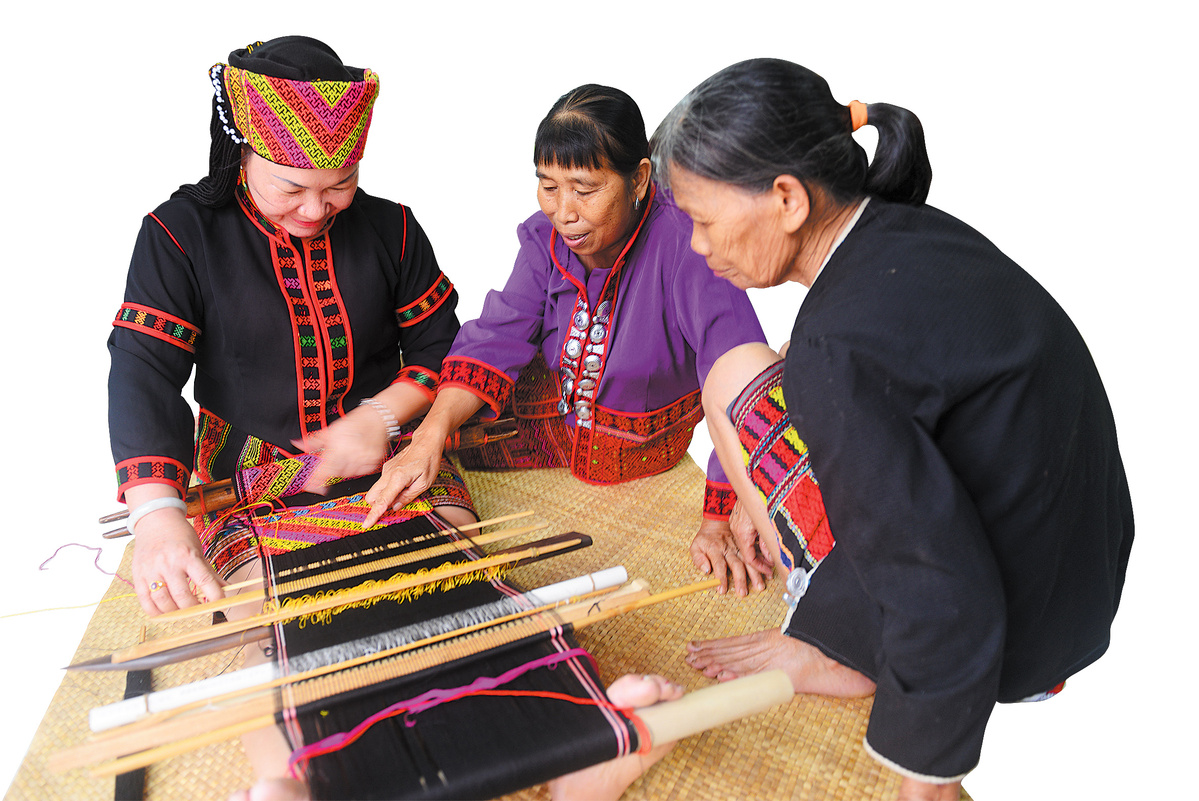

Liu remembers the first time her mother taught her the craft when she was 13.
"I was fascinated by the bright colors and vivid patterns that my mother produced and hoped someday I could weave beautiful textiles," Liu recalls.
She continued to hone her skills, and when she got married at 20, she made Li brocade to help with household expenses.
"Li brocade is an art that takes time to refine. A finished piece requires four steps: spinning, dyeing, weaving and embroidery, which can take three to four months, or longer," she says.
For the first step, after being rolled, twisted, pulled and shaped, the spun thread is cooked with rice paste and other ingredients, and then dried, resulting in a strong, durable thread that doesn't fray. The coloring process mainly uses natural dyes derived from wild plants, such as turmeric, chestnut and false indigo.
After binding, dyeing, drying and untying, the cotton threads are brought to life.
Then the weaver sits on the ground, with a handloom wrapped around her waist and her feet pressing on wooden rods holding the threads, and uses a bamboo shuttle to guide the threads, weaving back and forth.